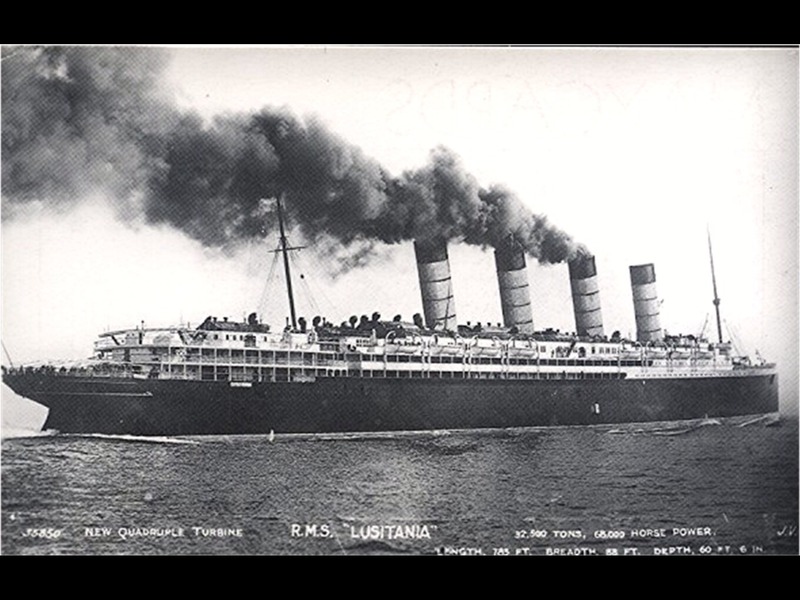The Patriotic Song and Loyalism
George Sidwell (1865-1915)
George Sidwell was born in Saffordshire, England, and immigrated to Canada with his family in 1905. They eventually settled in Hamilton, Ontario in 1911. At this time, Sidwell began to publish loyalist patriotic music he was composing. At some point between 1911 and 1915, Sidwell took on a management role for the Empire Music Publishing Company. Sidwell found value in the Patriotic Song due to the effectiveness in which it can profess feelings of loyalty and devotion.
In 1915, Sidwell sold one of his patriotic songs to a company in England for two thousand dollars. He chose to deliver the song in person, and took the Cunard Cruise Lines RMS Lusitania out of New York City to Liverpool on the 1st of May, 1915. Six days later, a German submarine off the coast of Ireland torpedoed the RMS Lusitania. The Ship sank in 18 minutes, nearly 1200 passengers died, and George Sidwell’s body was never recovered.
Jahangir, Rumeana. "WW1 Sinking Of Lusitania Recalled." BBC News, 2015.
"UEL - Bicentennial Branch Events." Uelbicentennial.Org.
Thank you to Michelle Pelletier for useful research.
The Flag we all Admire
A perfect example of a loyalist patriotic song is George Sidwell’s The Flag we all Admire. Sidwell’s loyalism is made clear through a study of the score’s cover, which features a dedication to “Sons of the Empire responding to their Country’s call.” The British Red Ensign takes up most of the page, and a subtitle indicates this score was published by the Young Loyalists’ League.
Verse 1
Flying o’er the wide, wide ocean, Floating over many lands,
Bearing tribute justly tender’d, Proudly raised by stalwart hands;
Emblem of the greatest freedom, Love and fellowship combined,
Nobly, firmly, strong and patient, Truth and loyalty entwined.
Chorus
‘Tis the flag that carries freedom, Where’er it proudly waves,
Proclaiming to the nations, her sons shall ne’er be slaves.
Keep the flag unfurl’d and flying, Wave the standard higher,
higher! We’ll protect the nation’s honour And the flag we all admire.
Verse 2
Does the Empire’s need demand us, Does the Mother call her sons,
Ready to the call responding Draw the sword or mount the guns;
Ready aye for Britain’s glory, Never shall her sons say “nay,”
Our old flag, our freedom’s emblem, We will follow thro’ the fray.
Chorus
‘Tis the flag that carries freedom, Where’er it proudly waves,
Proclaiming to the nations, her sons shall ne’er be slaves.
Keep the flag unfurl’d and flying, Wave the standard higher,
higher! We’ll protect the nation’s honour And the flag we all admire.
Sidwell’s lyrics reflect his loyalist values and patriotism, as writes of the British flag and what it represents. Given the context of the Great War, songs of freedom and nations united were clearly an appealing prospect.
United Empire Loyalists During the Great War
The First World War marked the creation of the United Empire Loyalists’ Association of Canada (UELAC), due to an act passed by the Canadian government in 1914. The act consisted of incorporating all Loyalists into a single central organization (the UELAC), in order to spread the United Empire Loyalists across Canada in a coordinated and efficient fashion.
Loyalists who served during the First World War were honoured on November 11th 1931, as their Loyalist descendants planted a maple tree in front of the Hamilton Court House in their memory.
Tanser, Catherine. "Hamilton Branch History." Hamilton Branch UELAC, 2011.
Wilson, Bruce. "Loyalists." The Canadian Encyclopedia, 2009.
